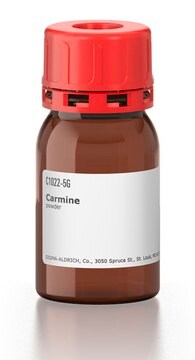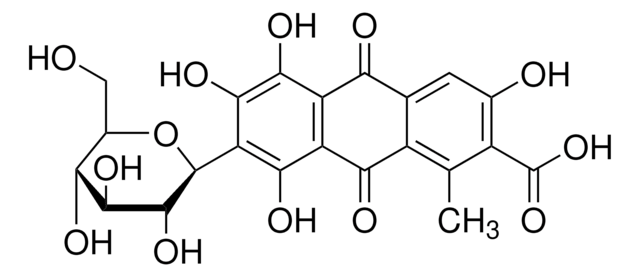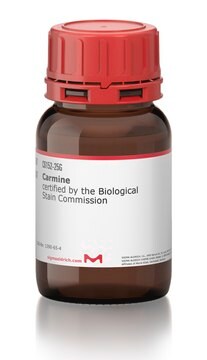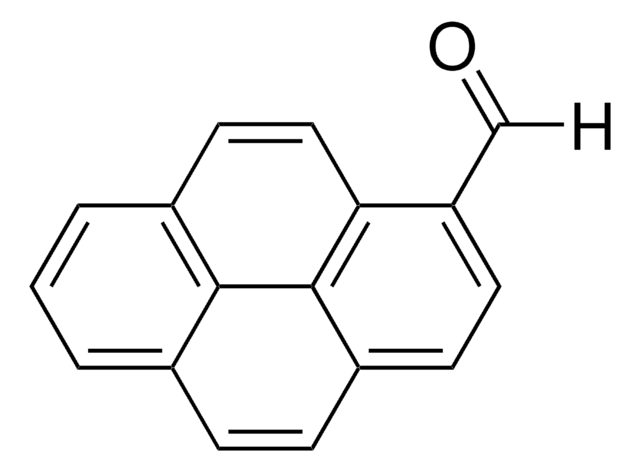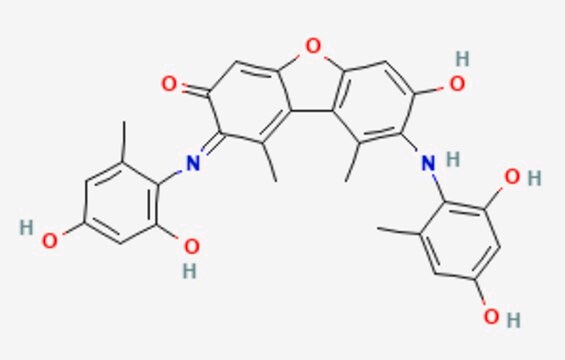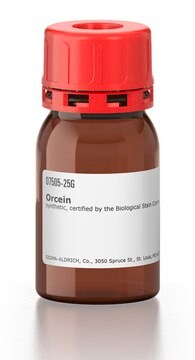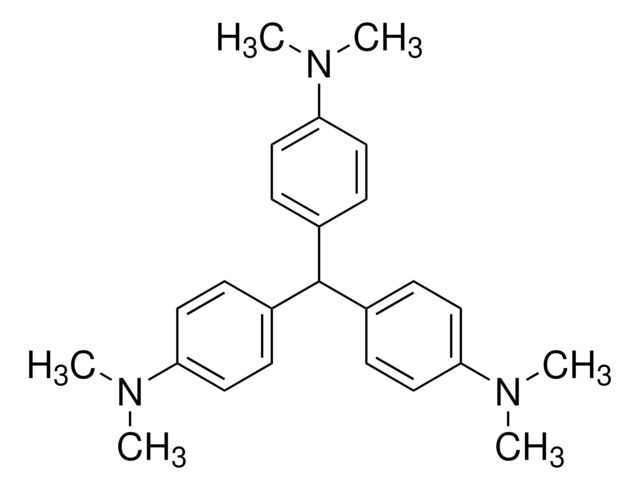229253
Carminic acid
≥90% (HPLC)
Synonyme(s) :
Natural Red 4
About This Item
Produits recommandés
Niveau de qualité
Pureté
≥90% (HPLC)
Forme
powder
Activité optique
[α]20/D +3.1°, c = 1 in H2O
Couleur
purple to red-purple
red to very dark red
Pf
136 °C
Solubilité
1 N acetic acid: 1%, clear to hazy, red
λmax
495 nm
ε (coefficient d'extinction)
≥13000 at 222-228 nm in ethanol at 0.03 g/L
≥18000 at 275-281 nm in ethanol at 0.03 g/L
Application(s)
diagnostic assay manufacturing
hematology
histology
Température de stockage
room temp
Chaîne SMILES
Cc1c(C(O)=O)c(O)cc2C(=O)c3c(O)c(O)c([C@@H]4O[C@H](CO)[C@@H](O)[C@H](O)[C@H]4O)c(O)c3C(=O)c12
InChI
1S/C22H20O13/c1-4-8-5(2-6(24)9(4)22(33)34)13(25)10-11(15(8)27)16(28)12(18(30)17(10)29)21-20(32)19(31)14(26)7(3-23)35-21/h2,7,14,19-21,23-24,26,28-32H,3H2,1H3,(H,33,34)/t7-,14-,19+,20-,21+/m1/s1
Clé InChI
DGQLVPJVXFOQEV-JNVSTXMASA-N
Vous recherchez des produits similaires ? Visite Guide de comparaison des produits
Catégories apparentées
Description générale
Application
Code de la classe de stockage
11 - Combustible Solids
Classe de danger pour l'eau (WGK)
WGK 2
Équipement de protection individuelle
Eyeshields, Gloves, type N95 (US)
Faites votre choix parmi les versions les plus récentes :
Déjà en possession de ce produit ?
Retrouvez la documentation relative aux produits que vous avez récemment achetés dans la Bibliothèque de documents.
Les clients ont également consulté
Notre équipe de scientifiques dispose d'une expérience dans tous les secteurs de la recherche, notamment en sciences de la vie, science des matériaux, synthèse chimique, chromatographie, analyse et dans de nombreux autres domaines..
Contacter notre Service technique